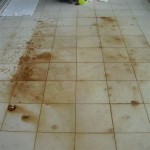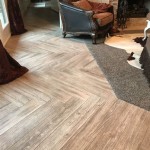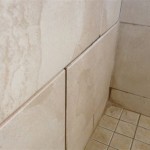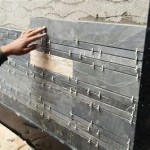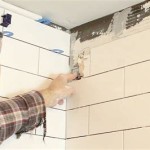The Beauty Of Wood Porcelain Tile Flooring In Bathrooms
The bathroom, traditionally a space defined by its functionality, is increasingly becoming a focal point for design innovation and personal expression. Among the myriad of flooring options available, wood porcelain tile stands out for its ability to seamlessly blend aesthetic appeal with practical performance. This material offers a compelling alternative to both natural hardwood and traditional ceramic or porcelain tiles, addressing common concerns associated with moisture, maintenance, and durability in a high-humidity environment like the bathroom.
Wood porcelain tile is essentially a type of ceramic or porcelain tile that is meticulously crafted to resemble the look and texture of real wood. Through advanced manufacturing techniques, manufacturers can replicate various wood species, grains, colors, and even textures, offering a wide range of design possibilities. This allows homeowners to achieve the warmth and natural beauty of wood flooring without the inherent drawbacks associated with using real wood in a bathroom.
The popularity of wood porcelain tile in bathrooms stems from its unique combination of visual appeal and technical advantages. It overcomes the limitations of natural wood, which is susceptible to water damage, warping, and mold growth. Simultaneously, it provides a warmer and more inviting aesthetic compared to standard porcelain or ceramic tiles, which can sometimes feel cold and sterile.
Durability and Water Resistance
One of the primary reasons wood porcelain tile is an excellent choice for bathrooms is its superior durability and exceptional water resistance. Porcelain is inherently a dense and non-porous material, making it highly resistant to water absorption. This characteristic is crucial in a bathroom setting, where exposure to moisture is constant. Unlike natural wood, which can swell, warp, and rot when exposed to water, wood porcelain tile remains dimensionally stable and unaffected by humidity.
The manufacturing process of porcelain involves firing the clay at extremely high temperatures, resulting in a hardened and impermeable surface. This process significantly reduces the tile's porosity, preventing water from penetrating the material. Moreover, many wood porcelain tiles are treated with a protective sealant during manufacturing, further enhancing their water resistance and making them even more suitable for wet environments like bathrooms.
The durability of wood porcelain tile extends beyond water resistance. It is also highly resistant to scratches, stains, and fading. This makes it a practical choice for high-traffic bathrooms where daily use can take a toll on flooring materials. The hard surface of porcelain tile resists scratches and abrasions from foot traffic, dropped objects, and cleaning tools. It also withstands common bathroom stains from spills, cosmetics, and cleaning products, ensuring that the flooring maintains its original appearance for years to come.
Furthermore, the color and pattern of wood porcelain tile are typically baked into the tile during the manufacturing process, making them resistant to fading from exposure to UV light. This is particularly important in bathrooms with large windows or skylights, where sunlight can cause fading in other flooring materials over time. The colorfastness of wood porcelain tile ensures that the flooring retains its vibrant appearance even after prolonged exposure to sunlight.
Aesthetic Versatility and Design Options
Another significant advantage of wood porcelain tile is its aesthetic versatility and the wide range of design options it offers. Manufacturers are able to replicate virtually any wood species, from classic oak and maple to exotic hardwoods like teak and mahogany. This allows homeowners to choose a flooring style that complements their overall bathroom design and personal preferences.
The available variations in color, grain patterns, and textures further enhance the design possibilities. Wood porcelain tile can be found in a wide spectrum of colors, from light and airy whites and grays to rich and warm browns and reds. Similarly, the grain patterns can range from subtle and understated to bold and dramatic, allowing for the creation of diverse visual effects. The textured surfaces of some wood porcelain tiles further enhance the realism and tactile appeal, mimicking the feel of natural wood underfoot.
Beyond the replication of different wood species, manufacturers also offer wood porcelain tile in various sizes and formats. Traditional plank sizes are commonly available, mimicking the look of hardwood flooring. However, larger format tiles are also becoming increasingly popular, offering a more contemporary and seamless appearance. These larger tiles can minimize grout lines, creating a cleaner and more spacious feel in the bathroom.
The installation patterns of wood porcelain tile can also contribute significantly to the overall design aesthetic. Common patterns include straight lay, staggered lay, herringbone, and chevron. Each pattern creates a distinct visual effect and can be used to enhance the architectural features of the bathroom. For example, a herringbone pattern can add a touch of sophistication and elegance, while a staggered lay can create a more casual and relaxed atmosphere.
The ability to combine different colors and textures of wood porcelain tile allows for creative and personalized designs. Homeowners can create custom patterns, borders, and accent areas, adding visual interest and defining different zones within the bathroom. This level of design flexibility makes wood porcelain tile a versatile choice for achieving a wide range of aesthetic styles, from rustic and traditional to modern and contemporary.
Maintenance and Cleaning
Wood porcelain tile is relatively easy to maintain and clean, making it a practical choice for busy homeowners. Unlike natural wood, it does not require regular sealing, waxing, or polishing. The non-porous surface of porcelain tile resists stains and spills, making it easy to clean with common household cleaners.
Routine cleaning of wood porcelain tile typically involves sweeping or vacuuming to remove loose dirt and debris. For more thorough cleaning, a damp mop and a mild detergent are usually sufficient. It is important to avoid using abrasive cleaners or scouring pads, as these can potentially damage the surface of the tile. A pH-neutral cleaner is generally recommended to prevent discoloration or etching of the grout lines.
Grout lines can be a source of dirt and discoloration over time. Regular cleaning of the grout lines with a stiff-bristled brush and a grout cleaner can help to maintain their appearance. Alternatively, a steam cleaner can be used to effectively remove dirt and grime from the grout lines without the need for harsh chemicals.
While wood porcelain tile is highly resistant to stains, it is still advisable to clean up spills promptly to prevent them from setting in. Common bathroom spills, such as soap, shampoo, and cosmetics, can be easily wiped away with a damp cloth. For more stubborn stains, a specialized tile cleaner may be necessary.
The low-maintenance nature of wood porcelain tile makes it an appealing choice for homeowners who want to enjoy the beauty of wood flooring without the hassle of regular upkeep. Its durability and resistance to stains and water ensure that the flooring will maintain its appearance with minimal effort, making it a practical and aesthetically pleasing option for bathrooms.

5 Irresistible Wood Look Porcelain Tile Doppelgangers

Wood Look Porcelain 3 Customer Reviews

Can You Have Wood Flooring In Bathrooms Havwoods Us

15 Bathrooms That Have Been Transformed With Wood Tile

15 Bathrooms That Have Been Transformed With Wood Tile
.jpg?strip=all)
5 Irresistible Wood Look Porcelain Tile Doppelgangers

Can You Have Wood Flooring In Bathrooms Havwoods Us

Bathroom Flooring Ideas Carpet One Floor Home

Rustic Wooden Look Bathroom Wall Tile Arizona

15 Bathrooms That Have Been Transformed With Wood Tile
Related Posts

